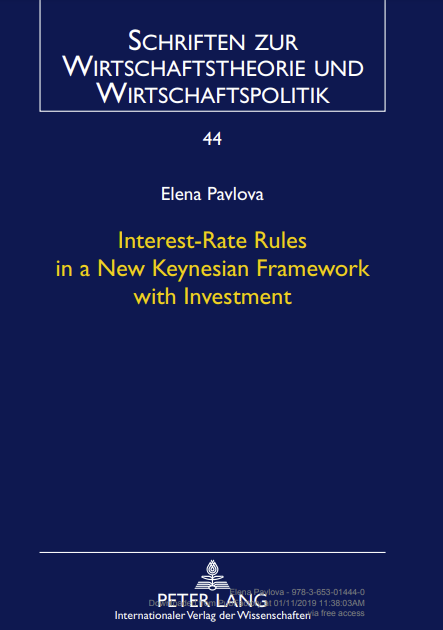Interest-Rate Rules in a New Keynesian Framework with Investment
Editorial: Peter Lang
Licencia: Creative Commons (by-nc-nd)
Autor(es): Pavlova, Elena
The last decades have witnessed major progress in both monetary policy theory and practice, with broad academic consensus on the desirability of monetary policy rules and ongoing research on their exact specification. Typically, the analysis is carried out in a New Keynesian framework with nominal rigidities and constant capital stock. The latter represents a constraint that this study seeks to overcome by introducing a model with investment and capital adjustment costs. The work assesses different interest-rate rule specifications with respect to the target variables included, based on two criteria: determinacy of rational-expectations equilibrium and convergence to steady state after a shock. The study concludes that rules with both an inflation and an output gap target ensure a unique rational-expectations equilibrium and a less distressful adjustment of the economy after the occurrence of shocks.
[Frankfurt am Main: 2011]
Compartir:
Una vez que el usuario haya visto al menos un documento, este fragmento será visible.


